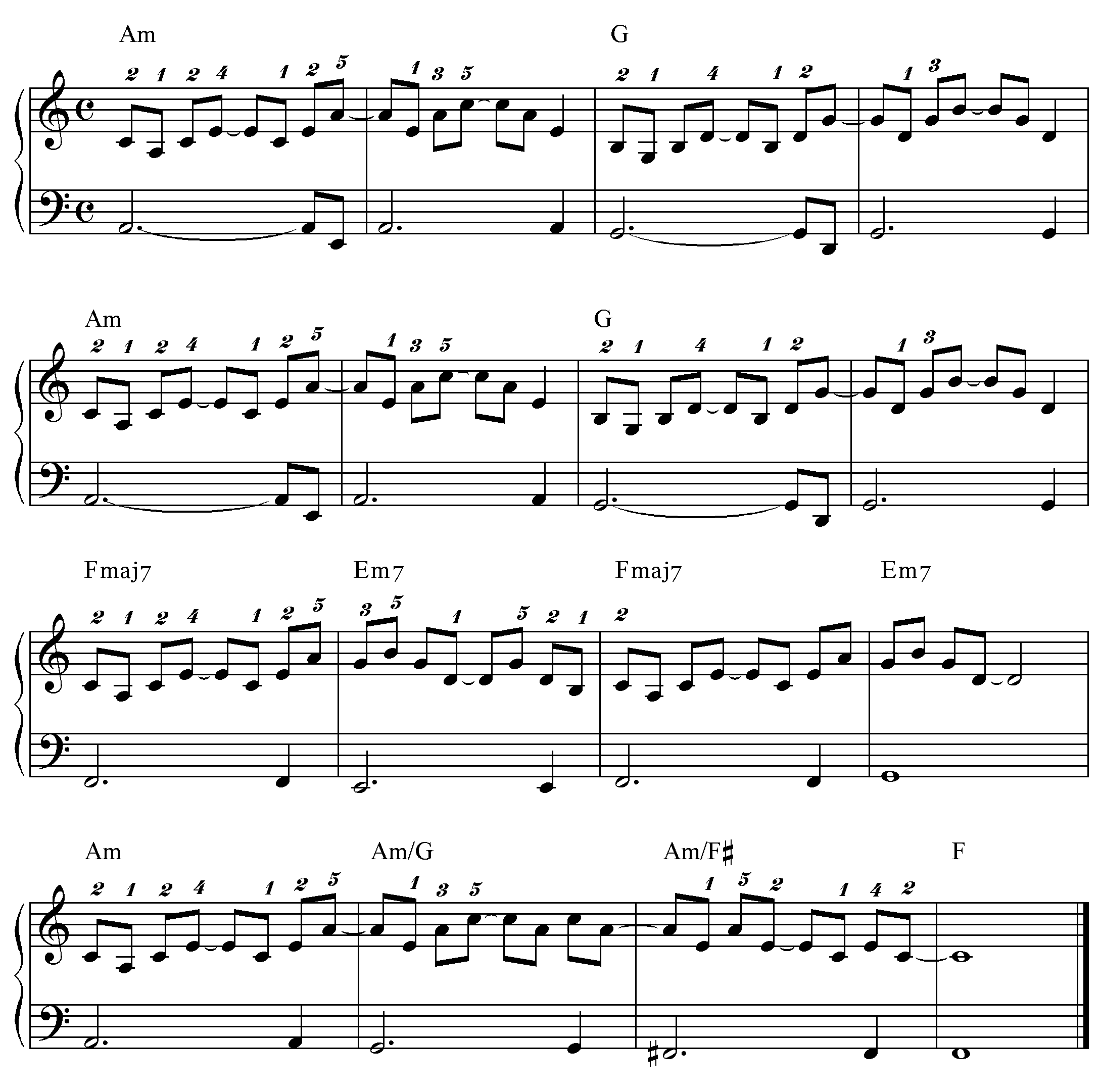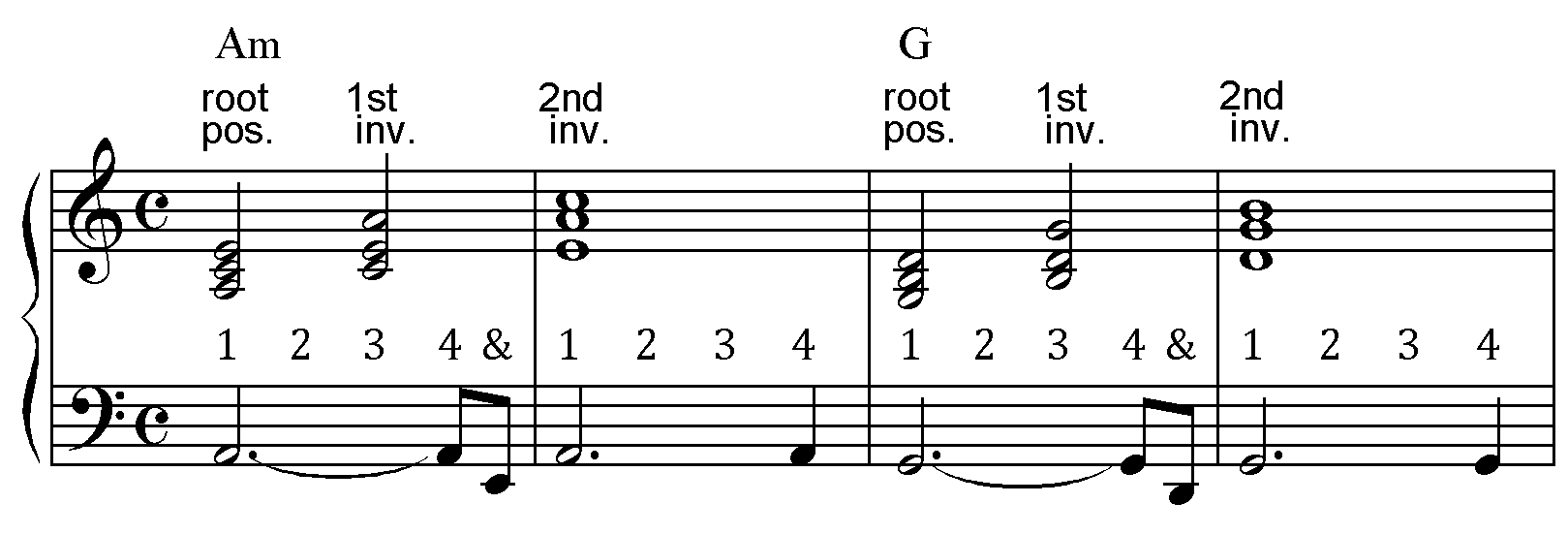Patreon CHORDS 101 Series
Broken Chord Patterns
- Page Four -
New chords and rhythms
The pair of chords we used in the last three modules - D minor, with C major a whole tone below - have a direct parallel a fourth below, with A minor and G major a whole tone below, so we can use our broken material in a different key without much difficulty.
But we're going to change the rhythm anyway - into four-four. So we need to make at least one of our three triad chord-tones longer to fill the four-quaver groups.
This in turn leads to some syncopation, which we practice in this module using counting and together-left-right (TLR) analysis.
You should have studied the Finding Inversions modules and the first two Broken Chords pages before tackling this module.
The module riff
Watch/listen to the module riff a few times so you know wjhat you're working towards.

The practice segments
Work through this video to get some basic four-four broken chord patterns into your repertoire.

Here's the chords-with-BMT illustration.

Here's the 'actual music', with the BMT spelled out and TLR and count for detailed study.

Now click through to Page Five for Parts Two and Three of the riff.
Hope you're enjoying studying with Musicarta! Come back soon!
|
OUT NOW! |
THE MUSICARTA BEAT & RHYTHM WORKBOOK At last! An effective approach to keyboard rhythm & syncopation skills. Learn more! |
ONLY $24.95! |
PATREON |
The MusicartaA methodical approach to keyboard syncopation for
|
PUBLICATIONS
exciting keyboard
creativity courses
CHORDS 101
WORKBOOK

~HANON~
video course

Musicarta
Patreon
PENTATONICS
WORKBOOK
video course

Creative Keyboard
video course

BEAT AND RHYTHM
WORKBOOK

- Volume 1 -

12-BAR PIANO
STYLES WORKBOOK

MUSICARTA MODES
WORKBOOK

PIANO STYLE

CANON PROJECT
video course

VARIATIONS
video course


- Piano Solo -
video course

- Piano Solo -


YouTube playlists